1. Early life and military service
Leonov's early life was marked by both personal hardship, including his family's experience during Stalin's purges, and the pursuit of his artistic and aviation passions.
1.1. Childhood and education
Alexei Leonov was born on May 30, 1934, in Listvyanka, West Siberian Krai, which was then part of the Russian SFSR. He was the eighth of nine surviving children born to Yevdokia Sotnikova and Arkhip Leonov, an electrician and miner. His family had a history of political persecution, as his grandfather had been forcibly relocated to Siberia due to his involvement in the 1905 Russian Revolution. In 1936, during Stalin's purges, his father was arrested and declared an "enemy of the people." Leonov later reflected on this period, noting that many independent and strong-willed individuals disappeared into remote Gulags.
Following his father's arrest, the family moved to Kemerovo to live with one of his married sisters. After his release, his father rejoined the family in Kemerovo and received compensation for his wrongful imprisonment. During these challenging times, Leonov turned to art to help provide for his family, initially drawing flowers on ovens and later painting landscapes on canvases. In 1948, the Soviet government encouraged citizens to move to Soviet-occupied Prussia, prompting his family's relocation to Kaliningrad. Leonov completed secondary school (No. 21) in 1953. Although he applied to the Academy of Arts in Riga, Latvia, he decided against attending due to high tuition costs. He instead chose to join a Ukrainian preparatory flying school in Kremenchuk, where he made his first solo flight in May 1955. Simultaneously, he continued to pursue his passion for art by studying part-time in Riga while embarking on an advanced two-year course to become a fighter pilot at the Chuguev Higher Air Force Pilots School in the Ukrainian SSR.
1.2. Military service and pilot training
On October 30, 1957, Leonov graduated with an honors degree and was commissioned as a lieutenant in the 113th Parachute Aviation Regiment, which was part of the 10th Engineering Aviation Division of the 69th Air Army in Kyiv. The following day, he was assigned to the 294th Reconnaissance Regiment of the 16th Air Army in East Germany. His rigorous pilot training and early military assignments laid the foundation for his future career as a cosmonaut.
2. Soviet space program
Alexei Leonov played a pivotal role in the Soviet space program, from being one of the first cosmonauts selected to undertaking the first spacewalk and commanding a historic international mission.
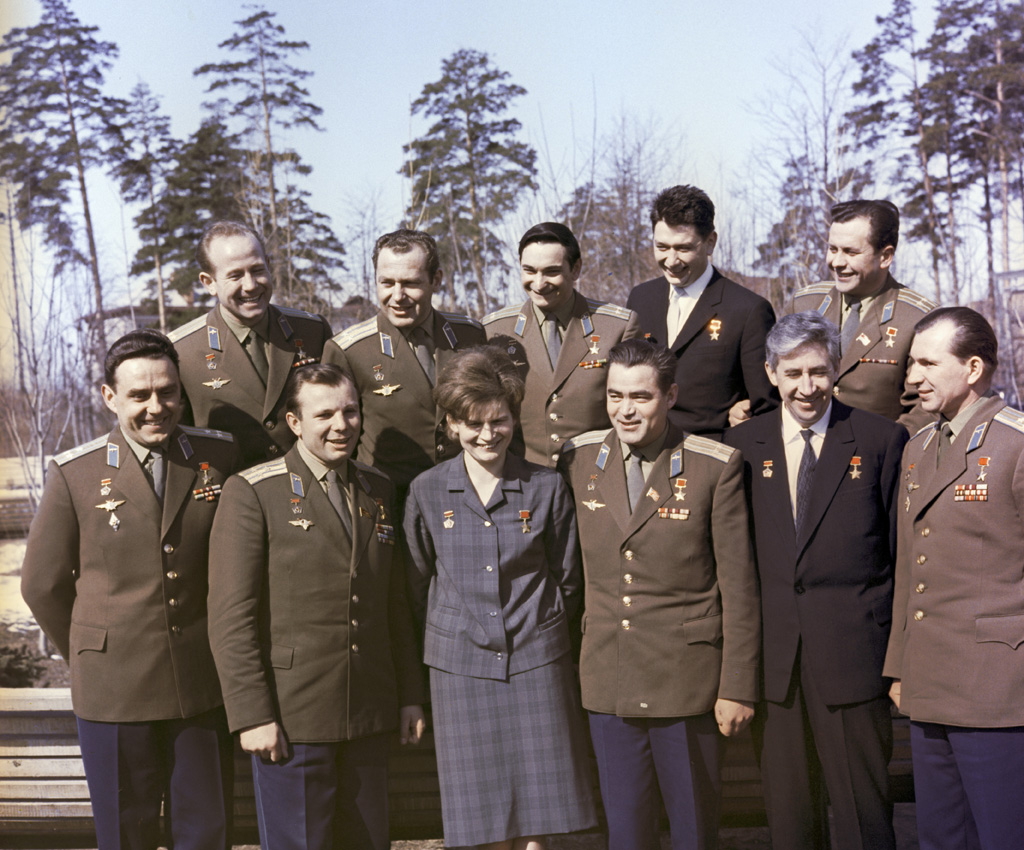
2.1. Cosmonaut selection and training
In 1960, Leonov was among the initial group of 20 Soviet Air Forces pilots selected to undergo cosmonaut training, marking the beginning of his space career. Like most cosmonauts of his era, he was a member of the Communist Party of the Soviet Union. To prepare for his groundbreaking mission, Leonov underwent 18 months of intensive weightlessness training.
2.2. First spacewalk (Voskhod 2 mission)
Leonov's historic spacewalk was originally planned for the Voskhod 1 mission, but this was cancelled. The pioneering event ultimately took place on March 18, 1965, during the Voskhod 2 flight. Launched from Baikonur Cosmodrome with Colonel Pavel Belyayev, Leonov exited the capsule at 07:00 UTC and spent 12 minutes and 9 seconds outside the spacecraft, connected by a 16 ft (4.8 m) tether.
This unprecedented achievement was fraught with peril. Towards the end of the spacewalk, Leonov's Berkut spacesuit inflated significantly due to the vacuum of space, making it impossible for him to re-enter the airlock. He recalled that his hands could not grasp, and he was stuck. In a critical, solitary decision, Leonov opened a valve to bleed off some of the suit's internal pressure, a move that was his own initiative and not a directive from ground control. This desperate measure allowed him to barely squeeze back into the capsule.
Despite the life-threatening incident, Leonov managed to create the first work of art in outer space: a small sketch of an orbital sunrise. The Voskhod 2 mission returned to Earth on March 19. The full extent of the difficulties Leonov faced during his spacewalk, particularly the suit inflation crisis, was not publicly disclosed at the time by Soviet authorities.
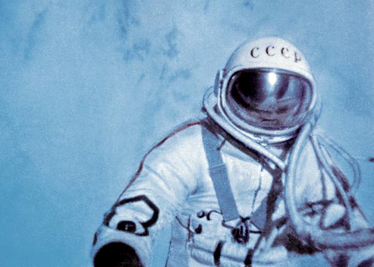
2.3. Lunar landing plans and other missions
After his historic spacewalk, Leonov was selected for several ambitious Soviet lunar programs. In 1968, he was chosen to command a circumlunar Soyuz 7K-L1 flight. However, this mission was cancelled due to persistent delays in developing a reliable circumlunar spacecraft and the successful completion of the Apollo 8 mission by the United States, which effectively won this phase of the Space Race. Leonov was also selected to be the first Soviet person to land on the Moon, aboard the LOK/N1 spacecraft. The design for this lunar landing mission included a required spacewalk between lunar vehicles, a factor that contributed to Leonov's selection given his experience. However, this ambitious project was also ultimately cancelled.
In 1971, Leonov was initially designated commander of the Soyuz 11 mission to Salyut 1, which was intended to be the world's first crewed space station. His crew included Valery Kubasov and Pyotr Kolodin. Just four days before launch, Kubasov was suspected of having contracted tuberculosis after an X-ray examination. According to strict regulations, the entire primary crew was replaced by the backup crew. Tragically, the replacement crew of Soyuz 11 perished during their return to Earth due to a defective valve that caused a sudden loss of cabin pressure. Leonov was aware that the valve in question had a history of misfires and had advised the crew to operate it manually during re-entry. However, the crew opted for automatic activation, leading to the fatal accident. Leonov later expressed profound self-reproach, believing that if he and his original crew had been on board, the accident would not have occurred.
Leonov was then slated to command the subsequent mission to Salyut 1, but this plan was scrapped after the Soyuz 11 tragedy and the subsequent loss of the space station. The next two Salyut stations (which were actually military Almaz stations) were either destroyed at launch or failed shortly after reaching orbit. Leonov's crew remained on standby during these setbacks. By the time Salyut 4 successfully reached orbit, Leonov had been reassigned to a more prestigious project.
2.4. Apollo-Soyuz Test Project

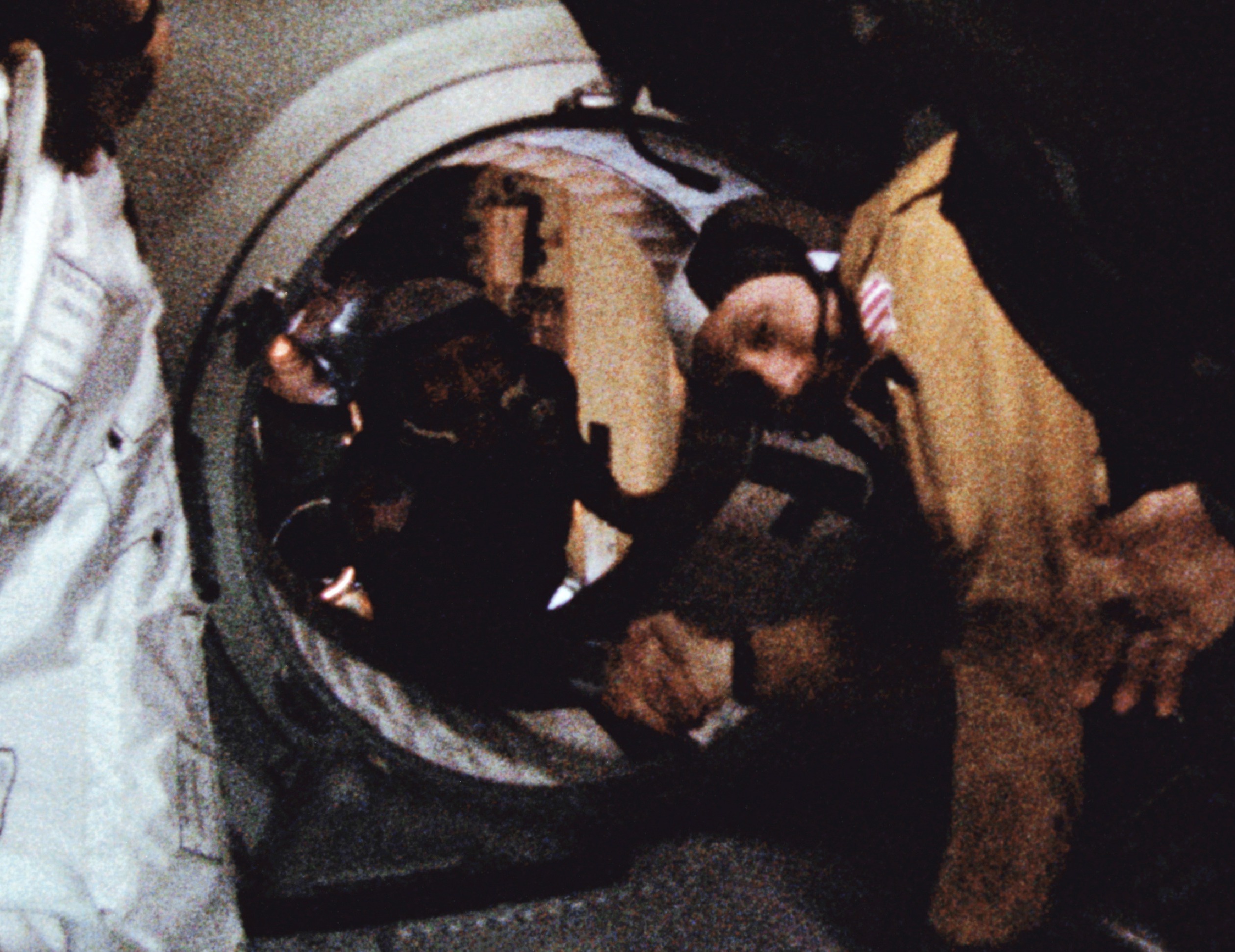
Leonov's second journey into space was as commander of Soyuz 19, the Soviet segment of the 1975 Apollo-Soyuz Test Project. This mission marked the first-ever joint space mission between the Soviet Union and the United States, a significant moment of détente during the Cold War. The Soyuz capsule docked in space for two days with an American Apollo capsule.
During the project, Leonov forged a lasting friendship with the US commander, Thomas P. Stafford, a bond so strong that Leonov became the godfather of Stafford's younger children. Stafford delivered a eulogy in Russian at Leonov's funeral in October 2019, highlighting the profound personal and political impact of their collaboration. The Apollo-Soyuz Test Project not only advanced space technology but also demonstrated the possibility of international cooperation even between geopolitical rivals, reflecting Leonov's commitment to bridging divides.
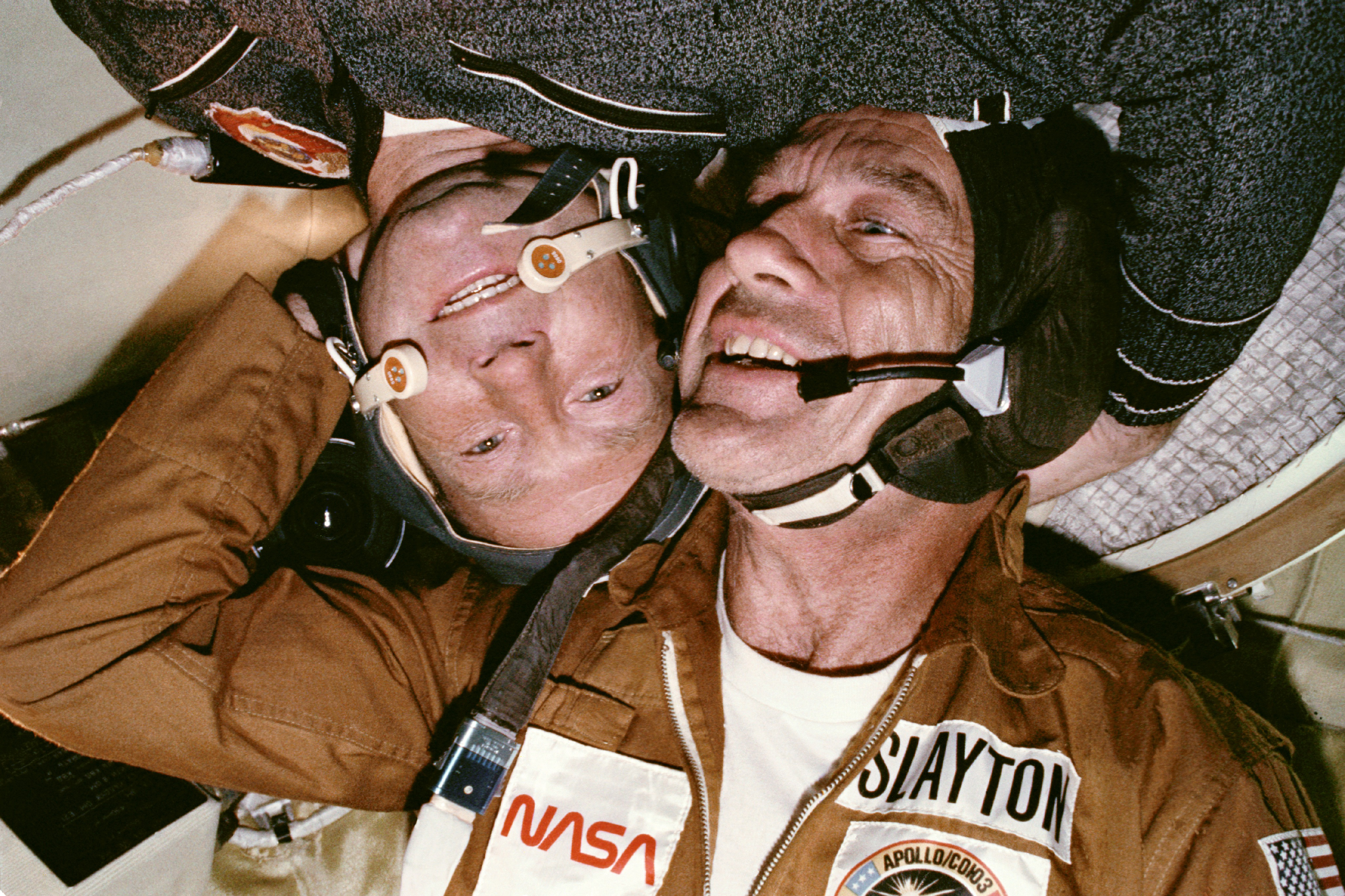
2.5. Cosmonaut training and guidance
From 1976 to 1982, Leonov served as the commander of the cosmonaut team, often referred to as the "Chief Cosmonaut." Concurrently, he held the position of deputy director of the Yuri Gagarin Cosmonaut Training Center, where he played a crucial role in overseeing the rigorous training and development of future cosmonaut crews. During this period, he also edited Neptune, the cosmonaut newsletter. Leonov retired from active service in 1992, leaving a legacy of leadership and experience in the Soviet space program.
3. Artistic activities
Leonov was not only a cosmonaut but also a highly accomplished artist, dedicating his life to both space exploration and creative expression. His passion for art was lifelong, and he notably became the first artist to create work in outer space.
He collaborated extensively with his friend, artist Andrei Sokolov, producing numerous artistic works and publishing books that featured their joint creations. Leonov's artistic endeavors extended into his space missions; during his Voskhod 2 flight, he took colored pencils and paper into space and sketched the Earth, creating the first artwork ever made in orbit. Later, during the 1975 Apollo-Soyuz Test Project, he drew portraits of the Apollo astronauts who flew with him, further blending his artistic talent with his space career.
His art has had a notable impact on popular culture. Arthur C. Clarke, the renowned science fiction author, noted in his 1982 novel 2010: Odyssey Two that the iconic alignment of the Moon, Earth, and Sun shown in the opening sequence of the 1968 film 2001: A Space Odyssey was strikingly similar to the composition in Leonov's own 1967 painting, Near the Moon. Clarke kept an autographed sketch of this painting, which Leonov made for him after a 1968 screening of 2001, hanging in his office. Clarke later dedicated 2010: Odyssey Two to Leonov and Soviet physicist Andrei Sakharov, and the fictional spaceship in the book was named Cosmonaut Alexei Leonov.
Leonov also contributed to the world of film. In 1980, he co-wrote the script for the science fiction film The Orion Loop with Valentin Selivanov. His works have been widely exhibited and published, establishing his reputation as a significant artist in his own right.
4. Later life and activities
Following his retirement from active cosmonaut duties, Leonov remained a prominent public figure, engaging in various social, political, and artistic endeavors.
4.1. Social and political activities
Leonov officially retired in 1991 and was in reserve status from March 1992, living in Moscow. From 1992 to 1993, he served as the director of space programs at Chetek. He transitioned into the banking sector, working as an advisor to the First Deputy Chairman of the Board of Directors of the Moscow-based Alfa-Bank and later becoming its vice-president in 2001.
He was also actively involved in politics, joining the United Russia party on December 18, 2002, and serving as a member of the party's Supreme Council until his death. Beyond his formal roles, Leonov headed the Banner of Peace in Space project from 1990 until his passing, promoting peace through space.
A dedicated science communicator, Leonov co-founded the international festival of science, space, and music, Starmus, in 2011 alongside astrophysicist Garik Israelian, Queen musician Brian May, and scientist Stephen Hawking. He also designed the image of Stephen Hawking for the Stephen Hawking Medal for Science Communication, established by Starmus in 2015, which is awarded for contributions to promoting scientific knowledge across various fields, including music, art, and cinema. His portrait of Hawking is featured on the front, while Leonov's first spacewalk and Brian May's guitar are depicted on the reverse, symbolizing the festival's components.
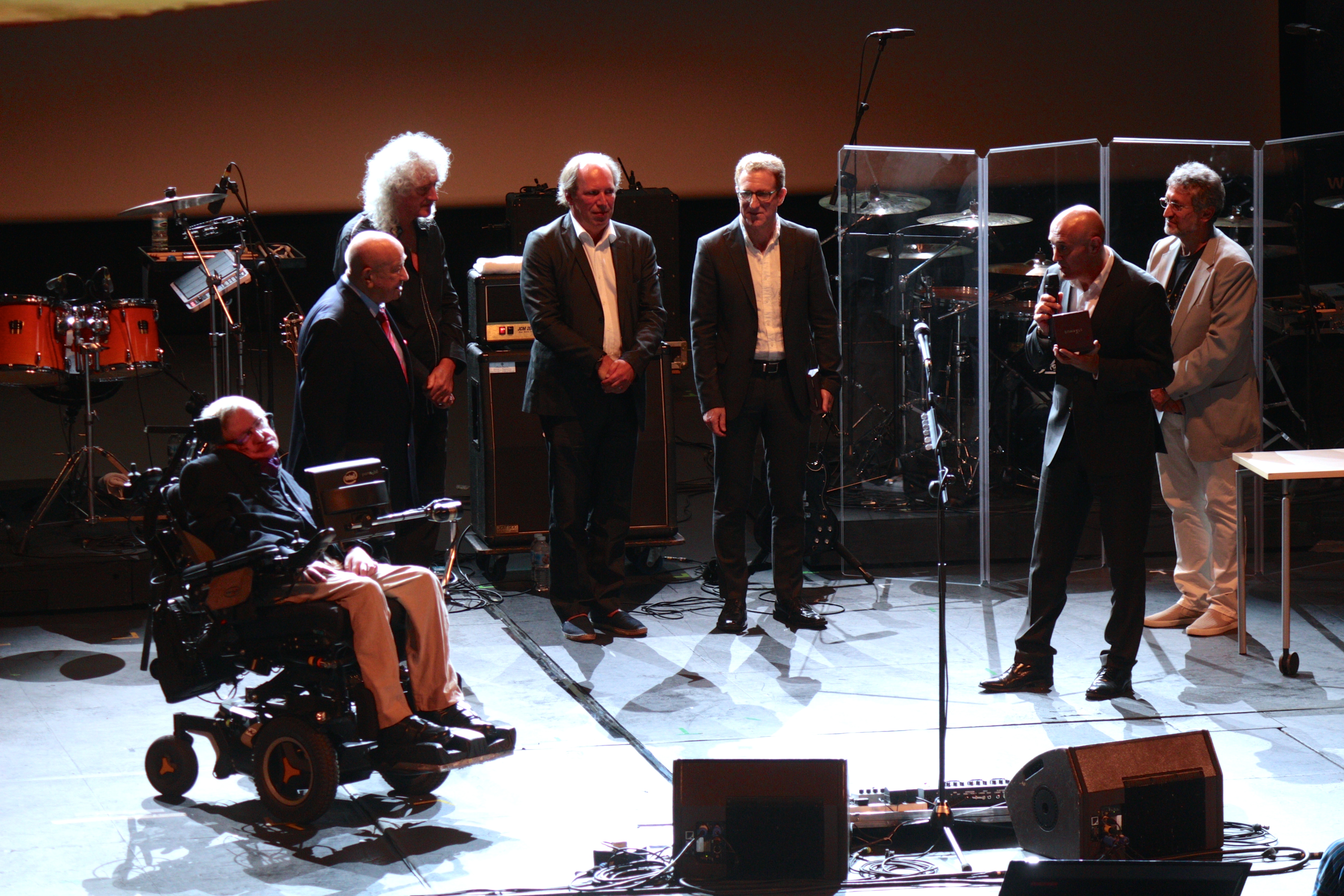
In 2004, Leonov collaborated with former American astronaut David Scott on a dual memoir titled Two Sides of the Moon: Our Story of the Cold War Space Race, which was published in 2006. The book featured introductions by Neil Armstrong and Tom Hanks. He was also interviewed by Francis French for the 2007 book Into That Silent Sea by Colin Burgess and French, continuing to share his invaluable experiences in space history.
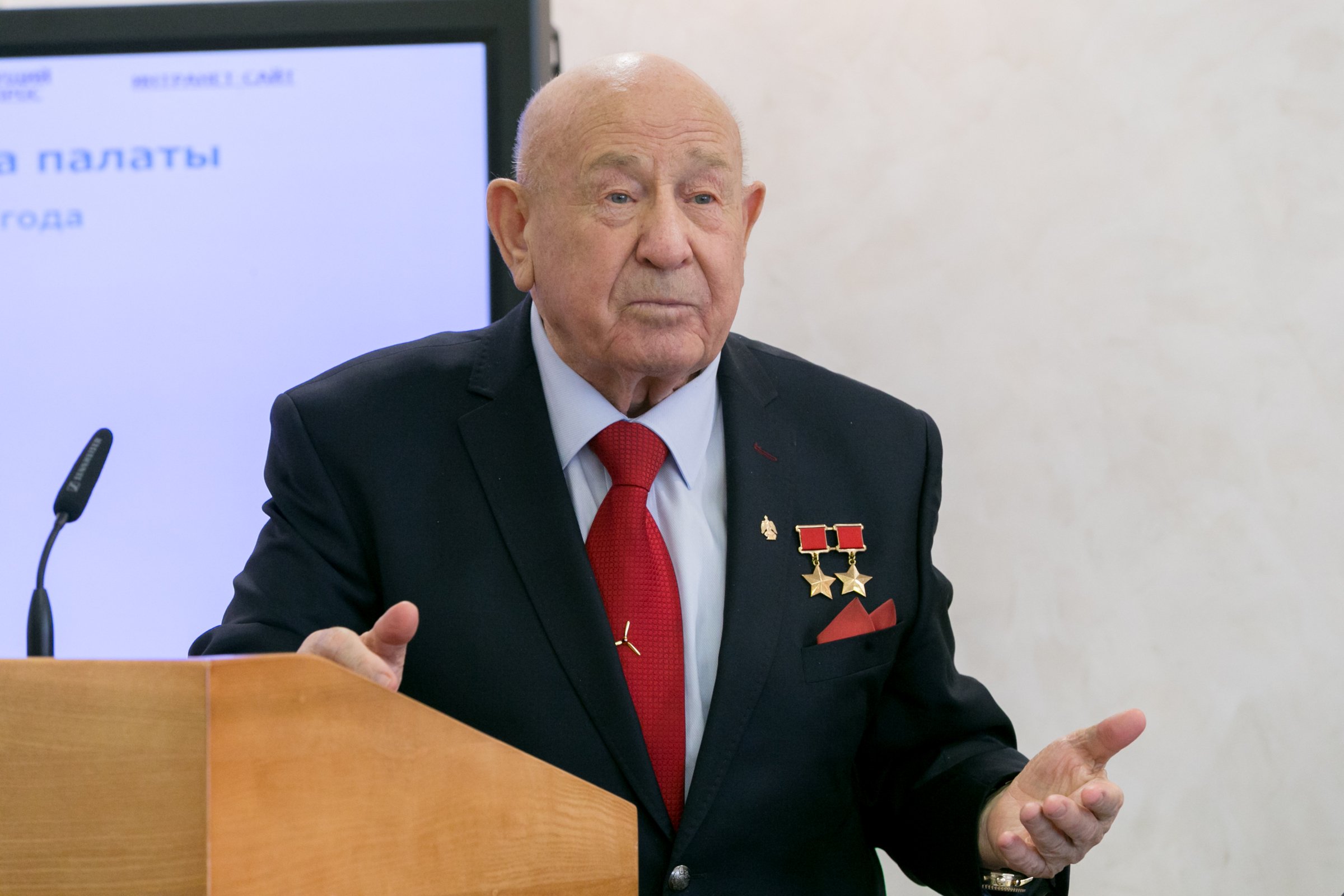
5. Personal life
Alexei Leonov married Svetlana Pavlovna Dozenko on December 13, 1959. Together, they had two daughters, Oksana and Viktoria. Sadly, Viktoria passed away in 1996. Leonov was also a grandfather to two grandchildren.
6. Death
Alexei Leonov passed away in Moscow on October 11, 2019, at the age of 85, following a prolonged illness. His funeral was held on October 15. At the time of his death, he was the last surviving member of the five cosmonauts who participated in the Voskhod programme. He was survived by his wife, Svetlana Dozenko, his daughter Oksana, and his two grandchildren.
7. Legacy and influence
Alexei Leonov's life and career left an indelible mark on space exploration, science, culture, and international relations. His achievements continue to inspire and resonate globally.
7.1. Awards and honors
Leonov received an extensive array of awards and honors from both the Soviet Union/Russia and international bodies, recognizing his pioneering contributions to spaceflight, military service, and public life.
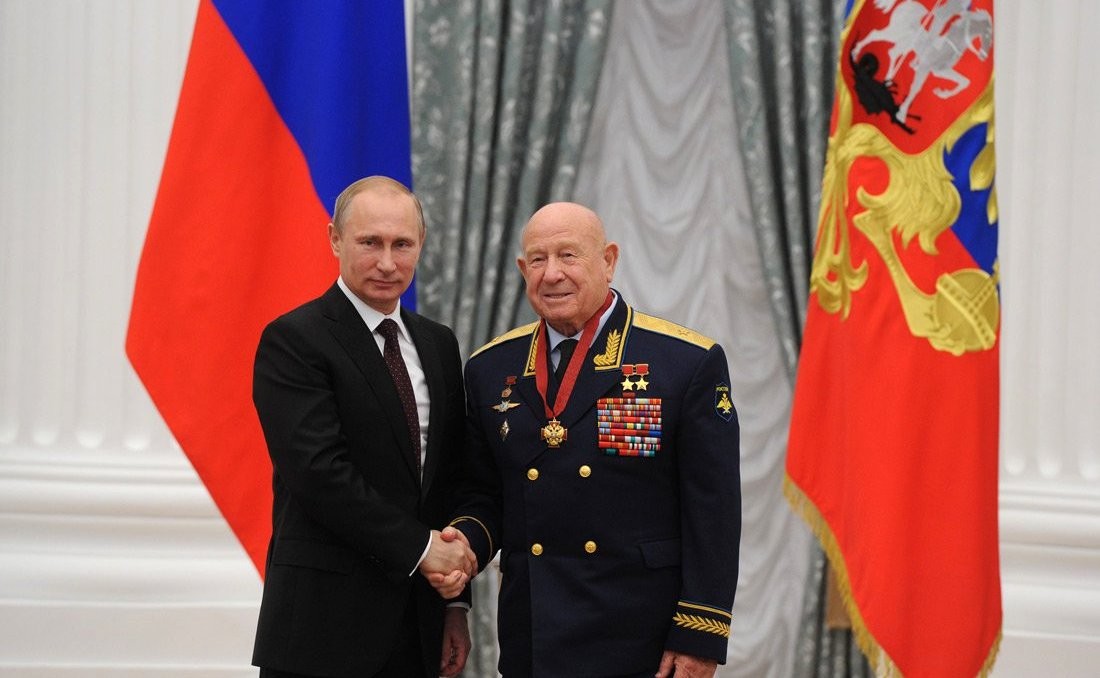
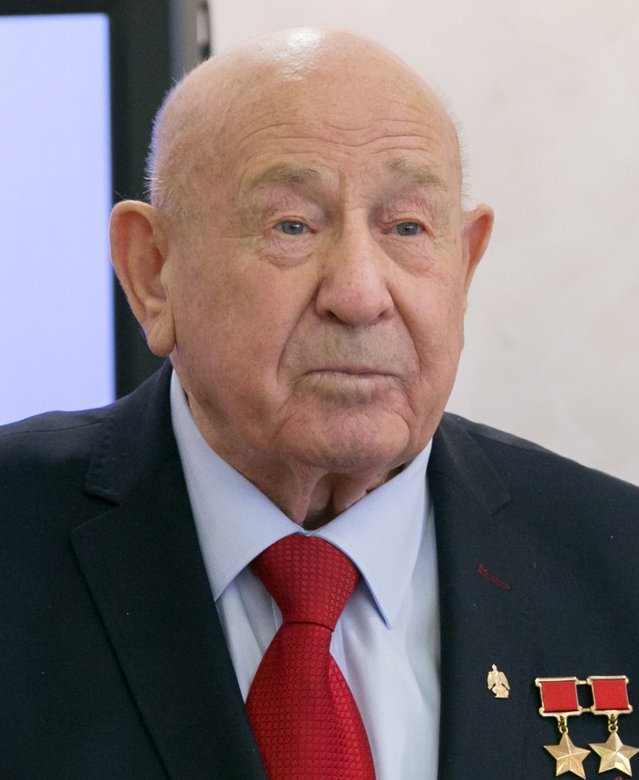
- Soviet and Russian Awards and Honors:**
- Foreign Awards:**
- Public and International Organization Awards:**
7.2. Cultural impact
Leonov's life and achievements have been widely commemorated and depicted in popular culture:
- His concerns about Siberian wildlife during an unexpected landing after the Voskhod 2 mission directly inspired the development of the TP-82 Cosmonaut survival pistol, a multi-purpose firearm regularly carried by cosmonaut expeditions from 1986 to 2007.
- The Leonov crater, located near Mare Moscoviense (Sea of Moscow) on the far side of the Moon, was named in his honor in 1970.
- Asteroid 9533 Aleksejleonov, first observed in 1981, also bears his name.
- In Arthur C. Clarke's 1982 novel 2010: Odyssey Two and its 1984 film adaptation, the Soviet spaceship is named Cosmonaut Alexei Leonov, a dedication by Clarke to Leonov and Andrei Sakharov.
- Leonov, along with Rusty Schweickart, co-established the Association of Space Explorers in 1985, an organization whose membership is open to all individuals who have orbited the Earth.
- He designed the Stephen Hawking Medal for Science Communication, which has been awarded since 2015 for works promoting scientific knowledge through various mediums like music and art. The medal features Leonov's portrait of Hawking on one side and a depiction of his first spacewalk with Brian May's guitar on the reverse.
- The 2017 Russian film The Age of Pioneers (Vremya PervykhRussian) dramatizes Leonov's account of the Voskhod 2 mission, with Yevgeny Mironov portraying Leonov. Leonov served as a technical adviser for the film, and he even requested that scenes featuring Yuri Gagarin be cut to keep the focus on his own narrative.
- The song "E.V.A." by Public Service Broadcasting, from their 2015 album The Race for Space, directly references Leonov's pioneering extravehicular activity.
- In the 2019 alternate history television series For All Mankind, Leonov is depicted as the first person to walk on the Moon, a fictionalized portrayal that underscores his historical significance.
- The 2020 dark ambient album Leonov by BlackWeald offers a musical interpretation of the Voskhod 2 mission.
- "Orbital Sunrise," an essay by John Green, released as part of his 2021 podcast The Anthropocene Reviewed, focuses in part on the sketch Leonov made during his 1965 mission, highlighting the artistic and philosophical dimensions of his spacewalk.
- At the 2022 Starmus Festival in Armenia, the documentary film Space Inside about Alexei Leonov premiered, featuring his last interview and introduced by his daughter, Oksana Leonova.
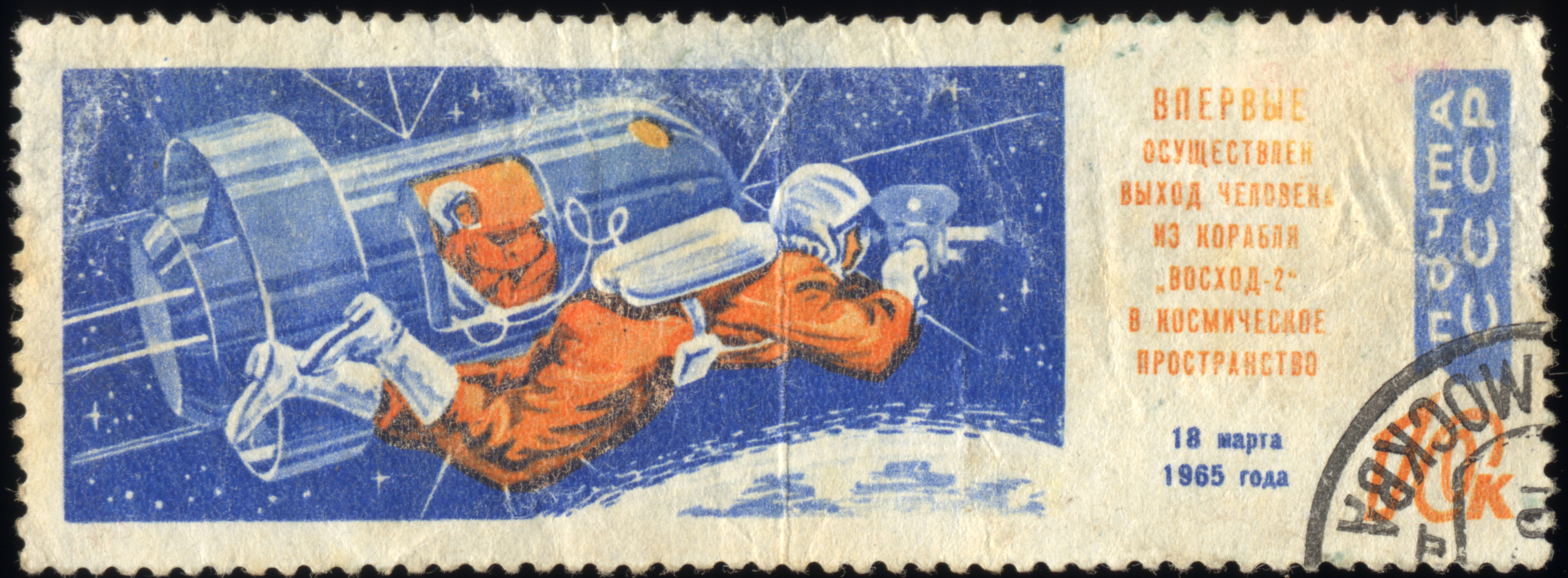
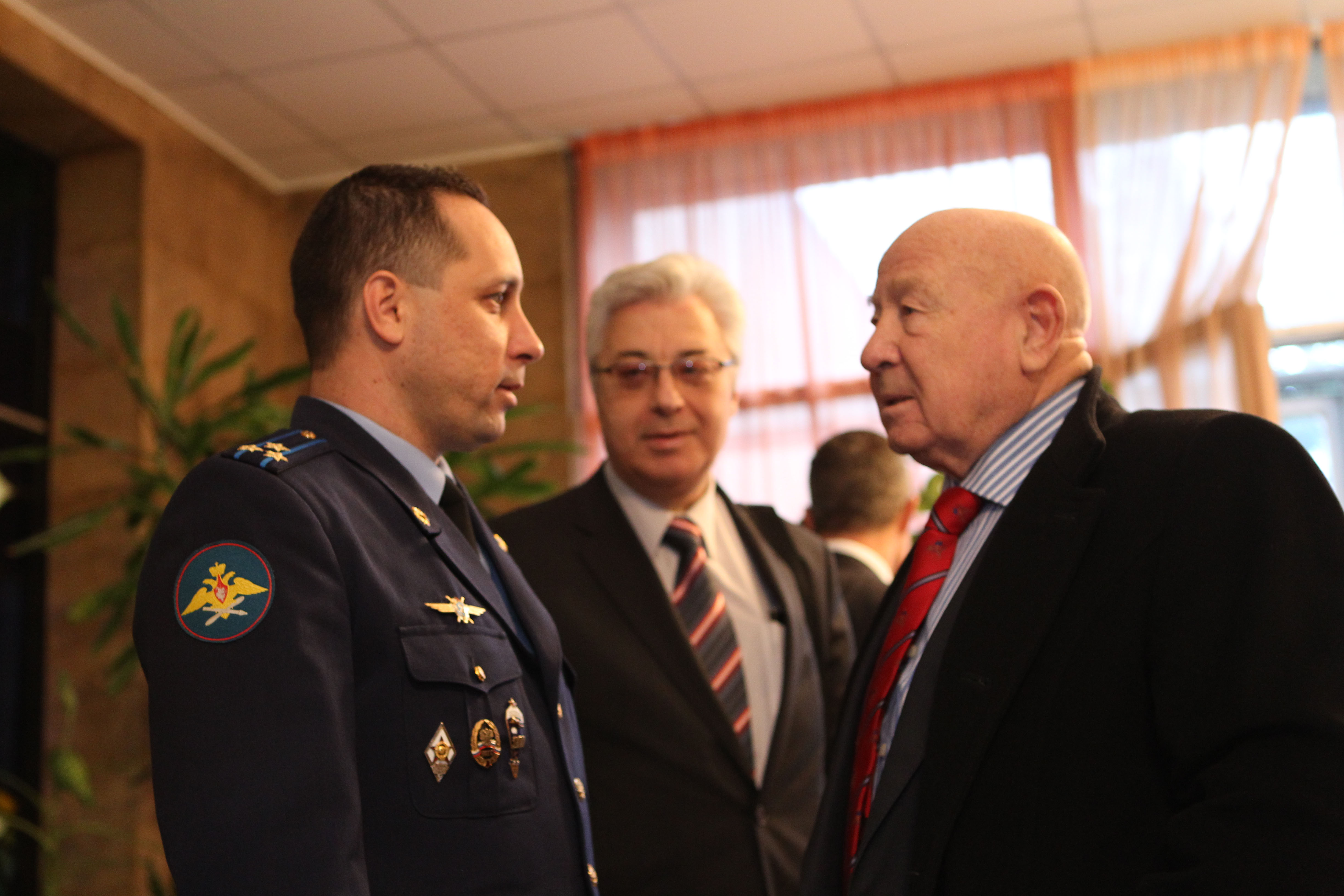
7.3. Science communication and international cooperation
Alexei Leonov was a tireless advocate for science communication and a symbol of international cooperation in space. His command of the Soyuz 19 mission during the 1975 Apollo-Soyuz Test Project demonstrated that geopolitical adversaries could collaborate effectively for scientific and humanistic goals. The mission fostered enduring friendships, such as his bond with US commander Thomas P. Stafford, illustrating the human dimension of space diplomacy.
Throughout his later life, Leonov dedicated himself to sharing his experiences and promoting space exploration. His involvement in the Starmus Festival as a co-founder and his role in designing the Stephen Hawking Medal underscore his commitment to fostering scientific knowledge and interdisciplinary collaboration. Through his writings, public appearances, and artistic works, Leonov consistently communicated the importance of space exploration as a shared human endeavor, emphasizing the values of peace, understanding, and joint progress beyond national borders.
8. See also
- Attempted assassination of Leonid Brezhnev